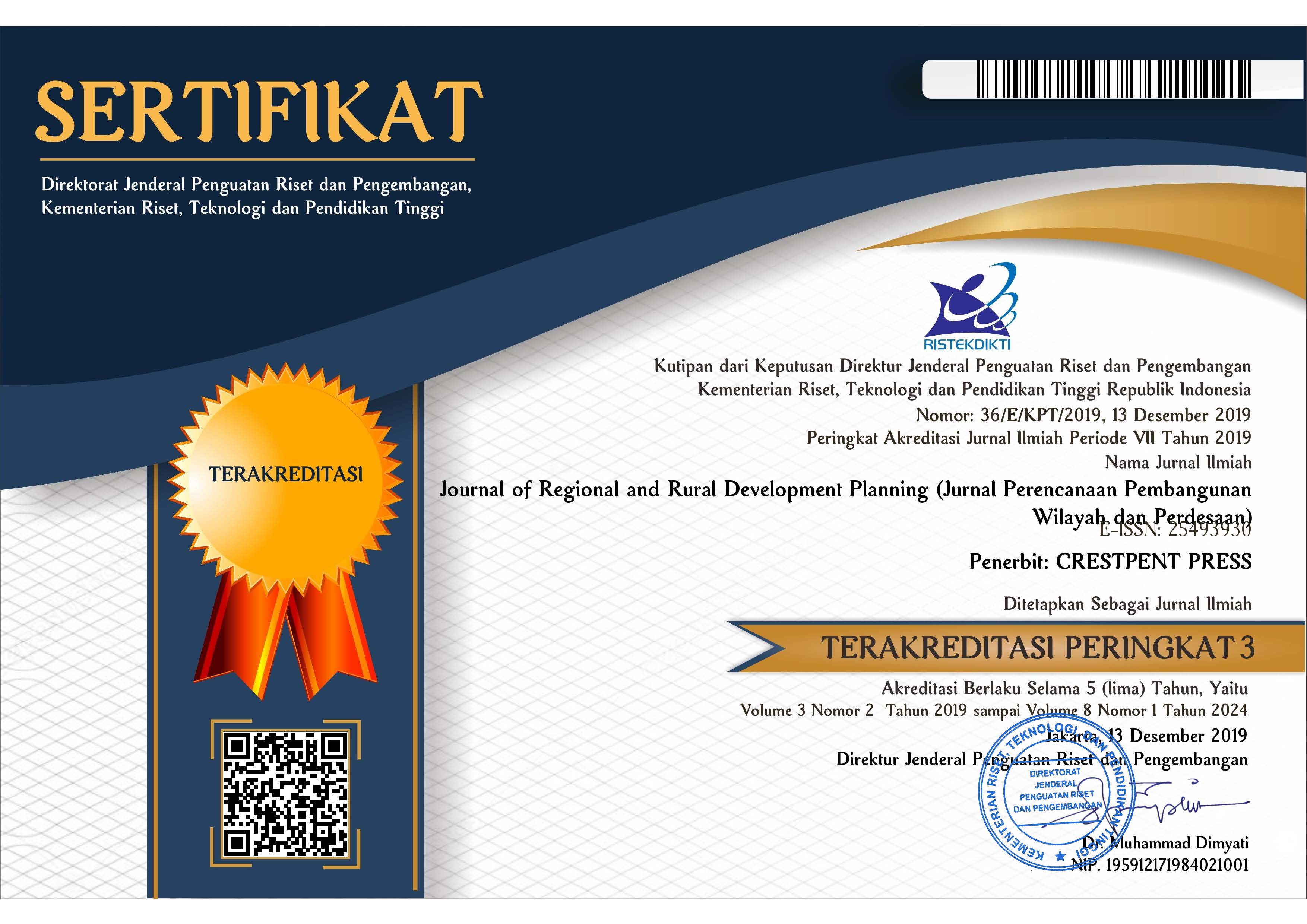Faktor Pemilihan Lokasi Bermukim pada Kawasan Rawan Bencana Longsor di Desa Guntur Macan, Kabupaten Lombok Barat
Abstract
The purpose of this research is to understand the settlement pattern and the factors that determine the selection of settlement locations on areas prone to landslides at Guntur Macan Village, West Lombok Regency. The research uses qualitative method by conducting questionnaire and in-depth interview to respondents. Mapping of community houses together with analysis on nearest neighbors in viewing the settlement patterns were conducted. Categorical frequency analysis was used to measure villagers’ perceptions that affect their choice to settle at disaster-prone areas. The result of mapping shows the existing settlement patterns are either cluster, linear or spread. The result of analysis of nearest neighbors shows T value of 1.74, which means an evenly spread pattern. Based on villager’s perception, factors determining the selection of settlement locations on areas prone to landslides are distance away from high-noises, pollution levels that do not interfere with health, and accessibility to job sites.References
Amy, I. (2013). Penanganan Permukiman di Kawasan Rawan Bencana Gerakan Tanah Studi Kasus: Permukiman Sekitar Ngarai Sianok di Kelurahan Belakang Balok, Kota Bukittinggi. Jurnal Perencanaan Wilayah dan Kota, 24 (2), 141-156
Armela, T. (2015). Pengaruh Kondisi Permukiman terhadap Preferensi Bermukim Buruh Industri di Permukiman Tiban Kampung. AGORA Jurnal Arsitektur, 15 (1), 36-51.
Bachry, A. A. S. (2015). Faktor Bermukim Masyarakat Terhadap Pola Persebaran Permukiman di Kawasan Rawan Bencana Longsor Kabupaten Magetan. Skripsi. Universitas Sebelas Maret, Surakarta.
Hidayati, Z. dan Noviana, M. (2016). Penanganan Preventif Terhadap Ancaman Tanah Longsor di Permukiman Bukit Selili – Samarinda. Prosiding Simposium Nasional RAPI, XV, 219–226.
Muta’ali, L. (2015). Teknik Analisis Regional Untuk Perencanaan Wilayah, Tata Ruang dan Lingkungan, 124–127. Badan Penerbit Fakultas Geografi Universitas Gadjah Mada. Yogyakarta.
Wardi, L. H. S., Sushanti, I. R., dan Widayanti, B. H. (2014). Karakteristik dan Perubahan Pola Permukiman Nelayan Lingkungan Karang Panas, Kelurahan Ampenan Selatan Kota Mataram. Jurnal Penelitian UNRAM, 18 (2), 29-39
Wiraprama, A. R., Zakaria, & Purwantiasning, A. W. (2014), Kajian Pola Permukiman Dusun Ngibikan Yogyakarta. Jurnal Arsitektur NALARs, 13 (1), 31-36.
Yuniarman, A., Widayanti, H., dan Hirsan, F. P. (2015). Karakteristik Pola Permukiman Pada Kawasan Perdesaan Studi Kasus: Desa Lepak Timur, Kecamatan Sakra Timur. Majalah Ilmah Ulul Albab, 19 (1), 1-7.
Copyright (c) 2018 Journal of Regional and Rural Development Planning

This work is licensed under a Creative Commons Attribution-ShareAlike 4.0 International License.




.png)














